Apple Watch Series 6, Apple Watch SE and new iPad, iPad Air launched
New Watches, iPads unveiled as tech giant flags research to see if blood oxygen monitoring feature can pick up early signs of virus.
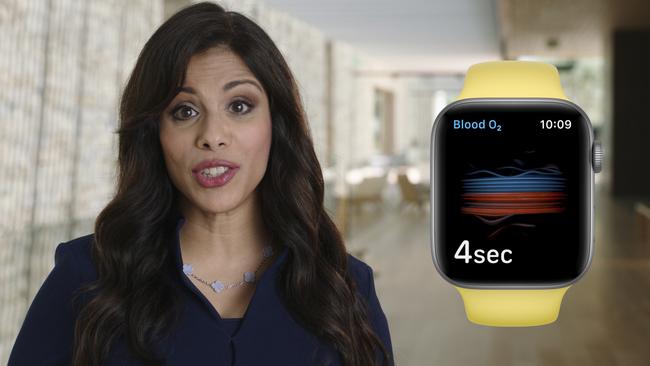
Apple has linked the blood oxygen monitoring feature in its new Apple Watch to detecting early signs of COVID-19.
As predicted, Apple overnight announced the availability of a new Apple Watch Series 6, a more budget oriented Apple Watch SE along with new iPads with faster processors — an 8th generation regular iPad and new iPad Air. The Air matches some features of its flagship iPad Pro at a lesser price.
It also announced the availability from tomorrow of upgraded operating systems for the iPhone, iPad, Apple TV and Apple Watch. The Australian this week detailed a massive change to the menu systems on iPhones with the automatic filing of apps into folders. This will come to iPhones this week.
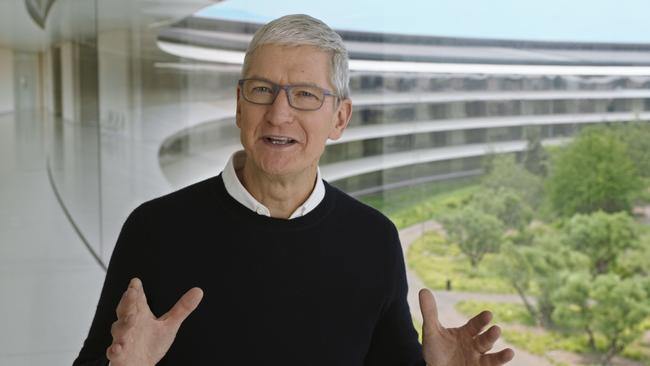
In a departure from the practice of many years, there was no September iPhone launch; the iPhone 12 with 5G is expected to launch next month.
Apple, which has ramped up its offering of monthly services as pivotal to its business model, also launched an overarching service called Apple One. It combines all of its offerings: Apple Music, Apple TV+, Apple Arcade (games), Apple News+ and a new Apple Fitness+ service which offers personalised workout experiences and new workouts each week. The packages include iCloud storage.
The premier version of Apple One with all these services costs $39.95 per month In Australia. A cut-down package of Apple Music, Apple TV+, Apple Arcade, and 50GB of iCloud storage will be $19.95 for individuals. The same package with 200GB of iCloud will cost $25.95 as a family package for six members.
The main star of the overnight event, however, was the Apple Watch Series 6.
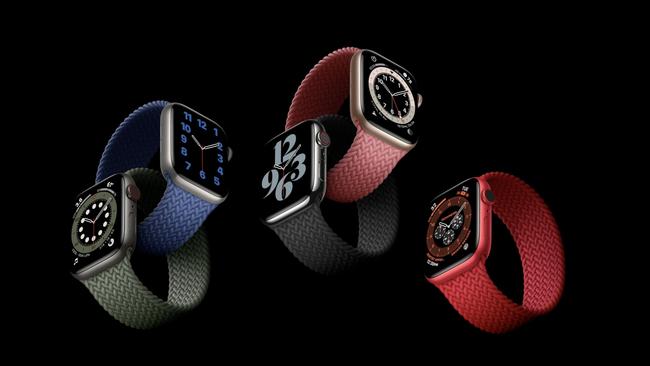
The link to detecting early signs of COVID is tenuous and Apple doesn’t suggest its watch offers anything like a way to detect COVID-19. But it could help detect symptoms.
A drop in oxygen saturation is one of the effects of COVID-19 which can fill lung air sacs with fluid, causing a drop in blood oxygen and trouble breathing. Sometimes, people can be unaware that their blood oxygen level has decreased.
This has resulted in an increase in sales of pulse oximeters that estimate oxygen saturation. Instead of clamping a probe onto your finger, the Apple Watch attempts this from your wrist. However, oxygen depletion is just one of several effects of COVID-19.
There are other aids. Many businesses and shops use everyday thermometers to vet people coming through the door. Apple CEO Tim Cook, however, did discuss links between the watch and various measurements it takes and the virus.
“Recently the Mount Sinai health system in New York launched a new warrior watch study,” he said during the presentation. “Using data from Apple Watch, researchers are studying the impact of COVID on the psychological well being of frontline health care workers by identifying early signs of stress, while also looking to predict infection before symptoms appear.”
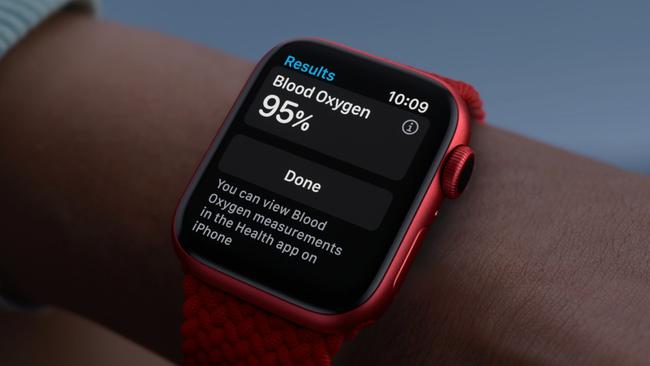
Apple says it is partnering with investigators at the Seattle Flu study (the location of a huge outbreak at the start of the pandemic) to better understand the interplay between COVID-19 and influenza. The study is taking place at the University of Washington School of Medicine.
Overall, Apple is involved in three health studies that include using Apple Watch to see how blood oxygen levels can be used in future health applications.
Apple says it will collaborate with the University of California, Irvine, and Anthem to examine how longitudinal measurements of blood oxygen and other physiological signals can help manage and control asthma.
“We will explore how changes of blood oxygen and heart rate can be early signals of the onset of these respiratory conditions,” Apple said during the presentation.
Apple announced Australian pricing of its new watches. The more budget Apple Watch SE will sell for $429 (GPS) and $499 (cellular and GPS). Apple Watch Series 6 will start at $599 (GPS) and $749 (GPS and cellular). You can order from today and they sell from Friday.

Apart from blood oxygen monitoring, Apple Watch Series 6 has a faster processor based on the A13 Bionic chip found in iPhone 11. Apple says the watch delivers 18 hours of battery life, which although an improvement, still means it doesn’t yet deliver 24 hours constant use. You now can get closer to that goal with charging taking less than 90 minutes daily. Sleep monitoring is now supported.
The new watch also features ultra wideband antennas for short-range wireless experiences such as digital car keys.
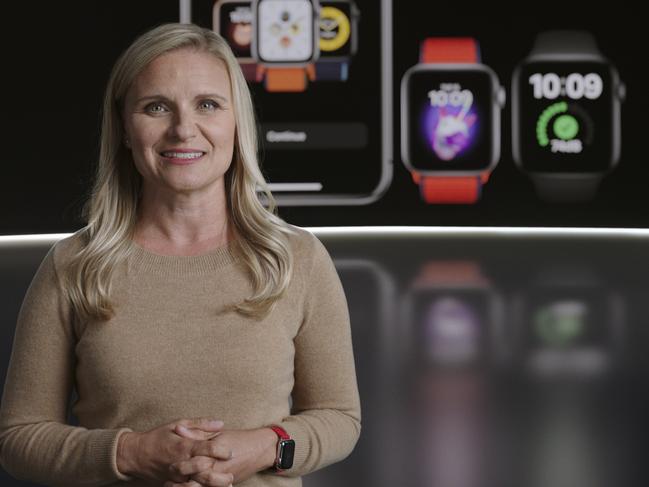
There’s a new always-on display which Apple says is 2.5 times brighter outdoors. There’s an always-on altimeter that constantly measures elevation for those working out outdoors.
New colours include a red watch with a red band, while a slew of new watch faces is available. One watch face shows multiple time zones.
The cheaper Watch SE doesn’t offer all the features of Series 6 but you do get fall-detection, fitness features such as the always-on altimeter, a built-in compass, and emergency SOS.
There are general software upgrades to Apple Watch too, such as a “family set-up” feature. You can use your phone to set up a watch for children. You can specify which people they can contact and there’s a “school time mode” which limits functionality so children stay focused. This feature requires a cellular Apple Watch of series 4 or later.
New iPad line-up
Apple announced two major upgrades to iPad which centred on improved specs, better displays and the increased usability of Apple Pencil.
Apple says its new eight generation standard iPad has an A12 bionic chip with a 10.2-inch Retina display, 40 per cent faster processing power and twice the graphics performance.
“This makes the new iPad up to two times faster than the top-selling Windows laptop, up to three times faster than the top-selling Android tablet and up to six times faster than the top-selling Chromebook,” says Apple.
The companion upgrade of the iPad OS14 operating system improves Apple pencil capabilities such as interpreting handwriting. You can use Apple Pencil to fill in forms on the display and your responses are digitised.
There’s a smart-select feature which understands the difference between handwriting and drawings, making object selection with the pencil easier.
Wi-Fi only models start at $499 with Wi-Fi/cellular from $699. Apple Pencil and keyboards are extra. You can order from today and buy from Friday.
Apple also sells a range called iPad Air that sits between the entry level iPad and premium iPad Pro.
It too has received an upgrade. It has a larger 10.9-inch display with a 2360x1640 pixel resolution, 12MP and 7MP cameras, an anti-reflective coating and it comes in five colours.
Significantly, Apple has moved its touch-ID fingerprint to the power button.
The Air has Apple’s latest processor, the A14 bionic with 5 nanometre architecture, and 11.8 billion transistors. Apple says this delivers a 40 per cent increase in performance. It says this makes iPad Air capable of editing 4K video, and for playing immersive games at 60 frames per second.
The new Air has a USB-C rather than Apple proprietary lightning connector. It will come to market in October with Wi-Fi only models starting at $899 and Wi-Fi/Cellular from $1099. Apple Pencils and magic keyboards are again extra.
Apple says all the features revealed at the launch will be available on these devices in Australia except for Apple Watch family set-up which isn’t listed for Australia just yet.


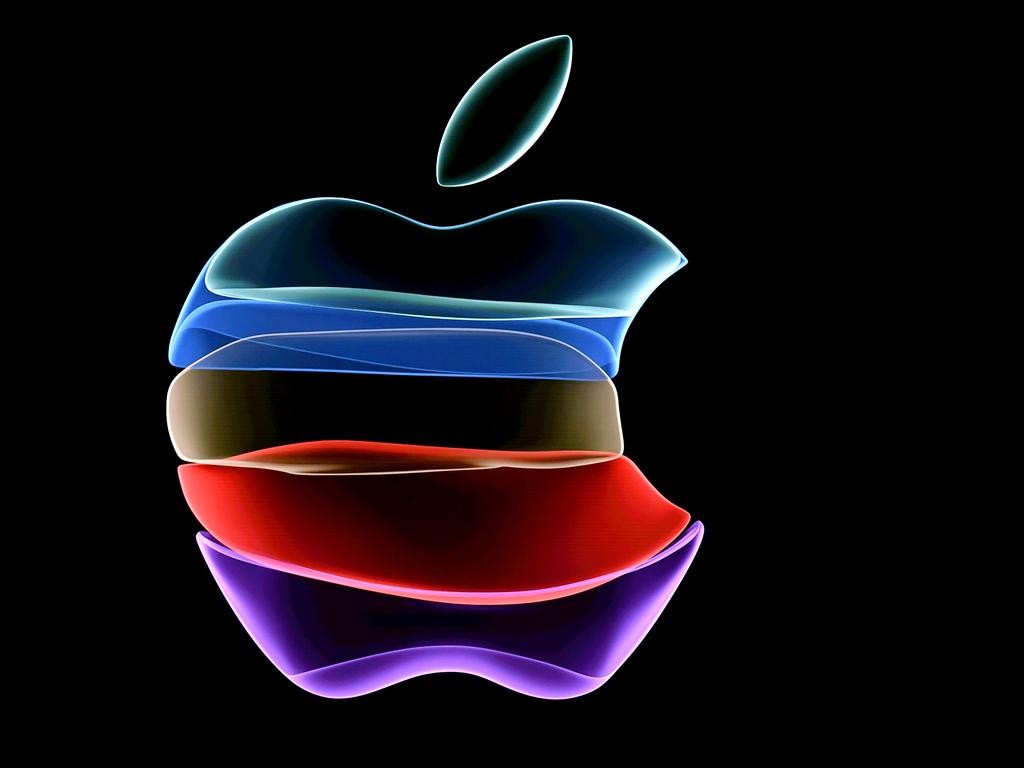



To join the conversation, please log in. Don't have an account? Register
Join the conversation, you are commenting as Logout